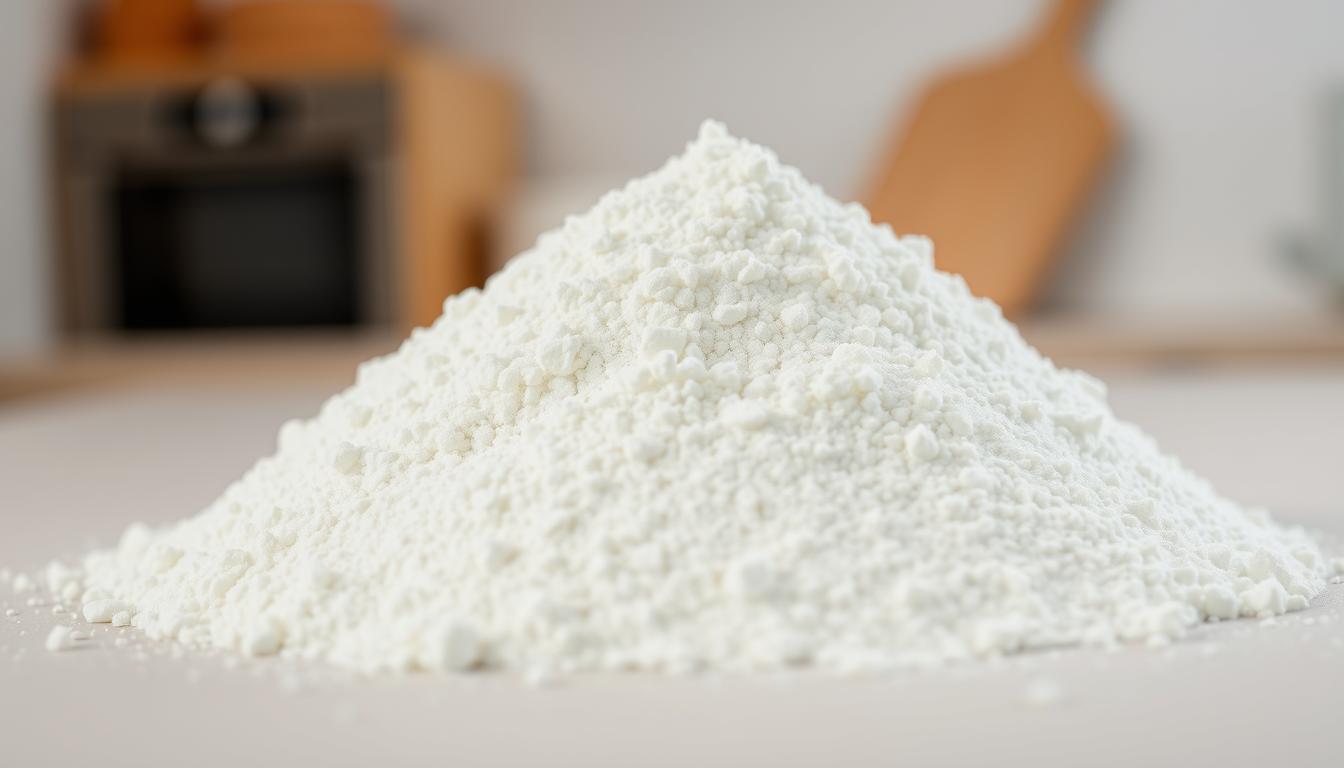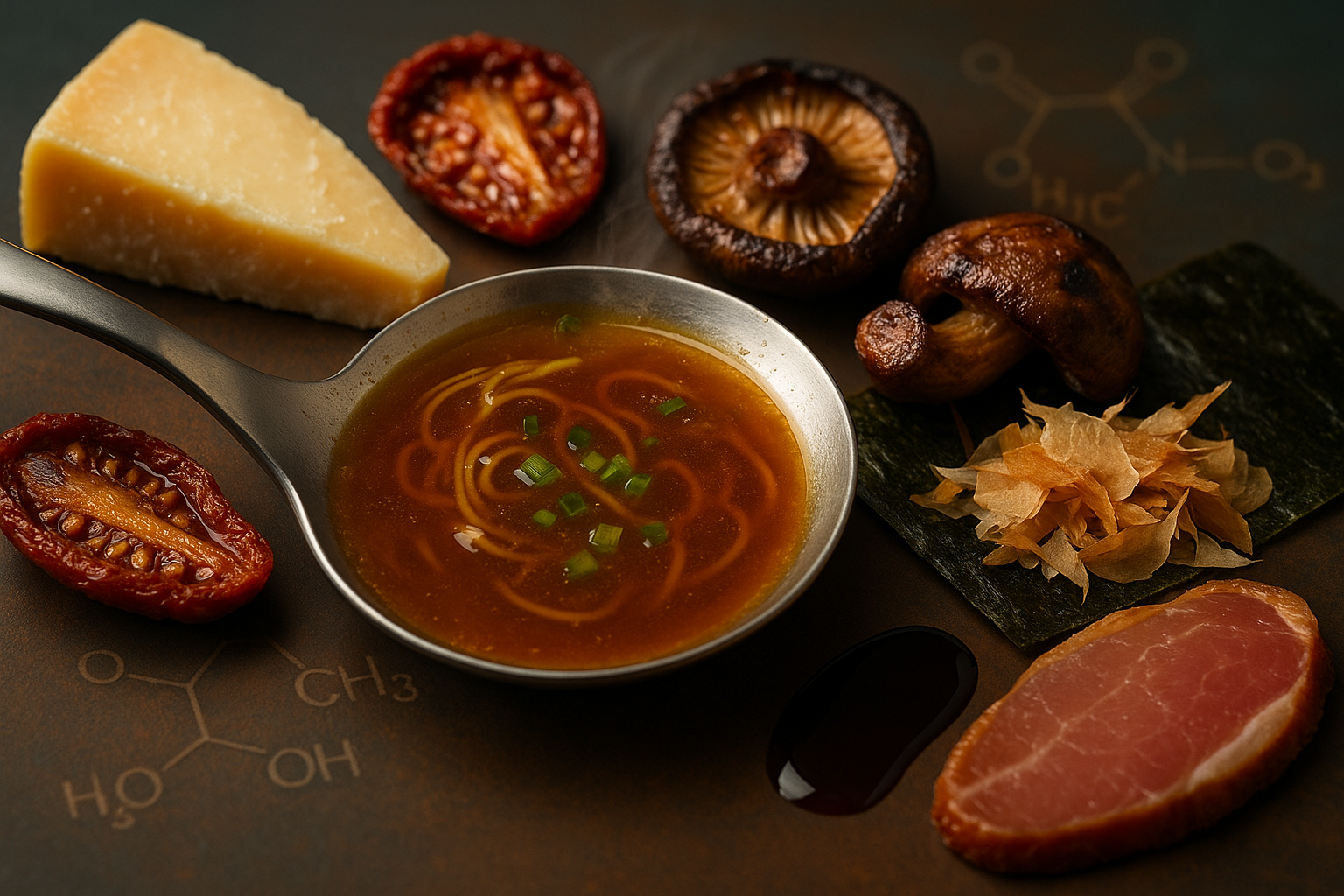
Kappa Carrageenan: Unraveling this Versatile Ingredient from Red Seaweed in the Food Industry
SUBSCRIBE TO OUR BLOG
Promotions, new products, and recipes.
Introduction
Carrageenan is a naturally occurring polysaccharide extracted from specific species of red seaweeds, predominantly found in the genus Kappaphycus and Eucheuma. With a long history of use, Kappa Carrageenan has emerged as a significant player in the food industry due to its unique gelling and thickening properties. This article aims to explore the historical background, production process, diverse applications, potential health benefits, FDA safety considerations, and lesser-known uses of Carrageenan, with a focus on Kappa Carrageenan.
What Is a Carrageenan?
Carrageenan is composed of repeating units of galactose and 3,6-anhydrogalactose, arranged in different patterns. To understand what are carrageenans, there are three types: Kappa, Lambda, and Iota. Each type exhibits unique properties and functionalities, making them valuable in various applications in food, pharmaceutical, cosmetic, and other industries.
Kappa Carrageenan
Kappa Carrageenan is characterized by a specific arrangement of the galactose units, which allows it to form strong, rigid gels when combined with cations like potassium. This gelling property makes Kappa Carrageenan particularly useful in the food industry for creating stable gels in dairy products, such as chocolate milk, ice cream, and yogurt. It is also employed in processed meats to enhance water retention and improve texture. Kappa Carrageenan is commonly used to provide a smooth and creamy mouthfeel in food products.
Lambda Carrageenan
Lambda Carrageenan has a different arrangement of galactose units, which gives it thickening properties but does not form gels. This type of carrageenan is primarily used as a thickener and stabilizer in various food products, such as sauces, dressings, and soups. Its ability to increase viscosity and improve texture makes it valuable in providing desired consistency and mouthfeel in many food formulations.
Iota Carrageenan
Iota Carrageenan forms soft, elastic gels in the presence of calcium ions. These gels are particularly heat-reversible, meaning they can be melted and reformed upon cooling. Iota Carrageenan is widely used in the food industry to stabilize and thicken dairy-based desserts, including puddings and custards. Its unique gel properties make it suitable for products where a soft, creamy texture is desired.
The choice of carrageenan type depends on the specific application and desired functionalities in the final product. Manufacturers and formulators carefully select the appropriate type of carrageenan based on the texture, stability, and processing requirements of the food or non-food item they are creating.
It is essential to note that while carrageenan has a broad range of applications and is generally considered safe when used within approved limits, some individuals may be sensitive to their consumption, experiencing digestive disturbances. As a result, food regulatory authorities, such as the FDA, closely monitor their usage in the food industry to ensure they are safe for consumption by the general population.
How Is Carrageenan Produced?
The primary source of carrageenan is certain species of red seaweed, which belong to the Rhodophyta division. The seaweeds that are commonly used for carrageenan production include various species from the genera Chondrus, Gigartina, Eucheuma, and Kappaphycus.
The production process of carrageenan involves several steps to extract the polysaccharide from the seaweed and purify it for various applications:
Harvesting: Seaweed farmers or harvesters collect specific seaweed species from coastal areas or seaweed farms. The choice of seaweed species depends on the desired type of carrageenan and its intended applications.
Cleaning: The harvested seaweed is thoroughly washed and cleaned to remove any impurities, sand, and debris.
Drying: After cleaning, the seaweed is dried to reduce its moisture content. This step can be done using natural sunlight, hot air, or industrial drying methods.
Milling: The dried seaweed is ground into a fine powder to increase its surface area, which facilitates the extraction process.
Alkaline Treatment: The milled seaweed is then subjected to an alkaline treatment, where it is mixed with an alkaline solution, typically potassium hydroxide. This treatment helps to dissolve the carrageenan from the seaweed cell walls.
Acid Treatment: After the alkaline treatment, the carrageenan-rich solution is neutralized with an acid, usually sulfuric acid. This step separates the carrageenan from the other components of the seaweed.
Heating and Filtering: The carrageenan solution is heated to further remove impurities and then filtered to separate any remaining solid particles.
Precipitation and Drying: The purified carrageenan solution is cooled, which causes the carrageenan to precipitate. The precipitated carrageenan is collected, washed, and then dried to remove excess moisture, resulting in the final carrageenan product.
The production process may differ slightly based on the type of carrageenan being produced (Kappa, Lambda, or Iota), as each type requires specific conditions and treatments to achieve its unique properties.
Once the carrageenan is obtained, it can be further refined and processed into various forms, such as powder, semi-refined, or refined carrageenan, depending on the intended application in food, pharmaceutical, cosmetic, or other industries.
History
The historical background of carrageenan dates back thousands of years and is closely tied to the coastal regions of Ireland. The discovery and use of carrageenan can be traced back to the ancient Irish people, particularly the Celtic communities, who lived along the rocky shores of the Atlantic Ocean.
Discovery: The exact origins of carrageenan's discovery remain somewhat elusive, as it likely emerged from indigenous knowledge and experimentation with seaweeds by the Irish coastal communities. It is believed that the ancient Irish noticed the gelling and thickening properties of certain red seaweeds, especially when boiled in water or milk. They soon realized that these seaweeds could be used as natural gelling agents in their traditional foods.
Primary Users: The primary users of carrageenan were the Celtic people of Ireland. For generations, they incorporated carrageenan-rich seaweed into their diets, and it became an essential ingredient in their culinary practices. The knowledge of using seaweed for gelling and thickening foods was passed down through oral traditions and cultural practices.
Early Use in Foods: Carrageenan's first documented use was in the preparation of Irish desserts and jellies. The Irish would boil the red seaweeds in water or milk to extract the gelling compounds, and the resulting gel was then used as a base for various sweet treats. One of the most famous early uses of carrageenan was in "Irish Moss Pudding," where the seaweed gel was combined with milk, sugar, and flavorings to create a creamy, textured pudding.
Over time, the use of carrageenan spread beyond Ireland, as sailors and explorers encountered this culinary practice during their voyages. This led to its introduction in other countries, where it was eventually embraced and adopted in local cuisines.
It was not until the 19th and 20th centuries that carrageenan's properties were more extensively studied and commercialized for industrial use. Advances in technology and scientific research enabled the extraction, purification, and application of carrageenan in various industries, such as the food, pharmaceutical, and cosmetic sectors.
Today, carrageenan is a widely used food additive globally, with applications in dairy products, processed meats, confectioneries, sauces, and more. Its historical background as a traditional ingredient in Irish cuisine highlights the long-standing relationship between humans and the natural resources found in their environment, showcasing how traditional knowledge can lay the foundation for modern advancements in various industries. As an example, check out this delicious recipe, Scotch Cream Carmel Custard which uses both iota carrageenan and kappa carrageenan in its preparation.
Is Carrageenan Bad For You?
Carrageenan has been associated with several reported health benefits, particularly in the context of gut health and potential anti-inflammatory effects. However, it's essential to note that the scientific evidence supporting these health claims is limited and mixed. Some studies have suggested potential positive effects, while others have raised concerns about its safety and potential negative impacts on the digestive system.
Gut Health: Some studies have suggested that carrageenan may have prebiotic-like properties, meaning it can serve as a food source for beneficial gut bacteria. This can potentially promote a healthy gut microbiota balance, which is associated with overall digestive health and various aspects of well-being. A 2016 study published in the journal Food Hydrocolloids reported that certain carrageenan types (kappa and iota) exhibited prebiotic-like activity in vitro, promoting the growth of beneficial bacteria. However, further research is needed to understand the extent of these effects on the human digestive system.
Anti-Inflammatory Effects: There have been limited studies indicating that carrageenan might have anti-inflammatory properties. In an animal study published in the journal Phytotherapy Research in 2014, researchers found that a carrageenan-rich seaweed extract demonstrated anti-inflammatory activity in rats with induced paw edema. However, more research is required to determine whether these effects translate to humans and how they might be beneficial in managing inflammatory conditions.
It's important to acknowledge that not all studies have reported positive outcomes concerning carrageenan's health effects. Some research has raised concerns about the potential negative impacts of carrageenan consumption. For instance, there have been studies, particularly in animal models, suggesting that carrageenan may induce inflammation in the digestive tract and may lead to gastrointestinal disturbances.
Furthermore, there is a subset of individuals who report experiencing digestive discomfort or sensitivity to carrageenan consumption. Some have linked carrageenan to symptoms like bloating, gas, and diarrhea. As a result, the Joint Expert Committee on Food Additives (JECFA) and the United States Food and Drug Administration (FDA) have reviewed carrageenan's safety and established acceptable daily intake levels to ensure its responsible use as a food additive.
FDA Safety Considerations: Kappa Carrageenan is considered safe for consumption by the United States Food and Drug Administration (FDA) when used within approved limits. However, there have been concerns about the potential for digestive disturbances in sensitive individuals, particularly when consumed in large quantities. It is essential to note that the overall safety of Carrageenan has been thoroughly evaluated, and its use in the food industry remains approved under specific regulations.
Lesser Known Uses in Foods
Improving Texture in Vegan and Plant-Based Products: Carrageenan food ingredients can be valuable in vegan and plant-based food formulations. It can enhance the texture and mouthfeel of plant-based dairy alternatives like almond milk, oat milk, and coconut milk. By adding a small amount of carrageenan to these products, you can achieve a creamier and smoother texture, making them more comparable to traditional dairy products.
Synergy with Locust Bean Gum (LBG): Combining carrageenan with locust bean gum (LBG) can create a synergistic effect, leading to improved gelling and thickening properties. This combination is particularly useful in applications like ice cream, where it helps control ice crystal formation and provides a smoother texture.
Enhancing Stability in Dairy Desserts: When used in dairy desserts like puddings and custards, carrageenan can help enhance stability and prevent syneresis (water separation) during storage. This ensures that the dessert maintains its desired texture and appearance over time.
Film-Forming Properties: Carrageenan has film-forming properties, which can be utilized to create edible films or coatings for various food products. These films can serve as natural barriers to extend the shelf life of fruits, vegetables, and even meats, as well as provide an attractive and protective layer for confectioneries.
Reduced Sugar Formulations: Carrageenan can be employed in reduced sugar or sugar-free formulations to mimic the texture and mouthfeel of full-sugar products. This is particularly beneficial in creating low-calorie or diabetic-friendly versions of various food items.
Beverage Clarification: In the beverage industry, carrageenan can be used for clarification purposes. It aids in removing haze-forming particles and impurities from fruit juices and other beverages, resulting in a clearer and visually appealing product.
Meat and Seafood Binders: Carrageenan's gelling and water-binding properties make it an effective binder in meat and seafood products. It helps improve the texture and juiciness of processed meats, such as sausages and patties, while also reducing cooking loss during processing.
Stabilizing Foams and Emulsions: Carrageenan can stabilize foams and emulsions, making it useful in the preparation of whipped toppings, mousses, and other aerated food products.
Preventing Whey Separation in Dairy Beverages: In dairy beverages like chocolate milk and flavored milk, carrageenan can be used to prevent whey separation, maintaining a homogeneous and visually appealing product.
The Future of Carrageenan
The future of carrageenan usage is likely to be shaped by several factors, including advancements in food technology, changing consumer preferences, and ongoing research on its safety and potential health benefits. While carrageenan has been a significant ingredient in the food industry for decades, its applications and uses may evolve in the following ways:
Innovation in Plant-Based and Vegan Foods: As the demand for plant-based and vegan food products continues to rise, carrageenan is expected to play a more prominent role in enhancing the texture and stability of these alternatives. Carrageenan's ability to create creamy and smooth textures in dairy substitutes, such as plant-based milk, cheese, and yogurt, will be highly valuable for manufacturers seeking to replicate the sensory experience of traditional dairy products.
Health-Focused Formulations: With increasing interest in functional foods and ingredients that offer potential health benefits, carrageenan may be further explored for its prebiotic-like properties and possible anti-inflammatory effects. Ongoing research in this area may pave the way for the development of new carrageenan-based products aimed at promoting gut health and overall well-being.
Sustainable and Clean Label Trends: As consumers become more conscious of the environmental impact of their food choices, there may be a push for cleaner labels and sustainable sourcing of ingredients. Carrageenan's natural origin from seaweeds aligns with these trends, making it an attractive option for food manufacturers looking to meet consumer demands for more sustainable and natural additives.
Emerging Applications in Pharmaceuticals and Cosmetics: Beyond the food industry, carrageenan's unique properties may lead to increased exploration in pharmaceutical and cosmetic applications. Its film-forming capabilities and potential anti-inflammatory effects could be harnessed in topical formulations, wound dressings, and drug delivery systems.
Improved Manufacturing Techniques: Advancements in carrageenan extraction and purification techniques may result in higher quality and more refined carrageenan products. This, in turn, could expand its usability in various food and non-food applications and lead to more cost-effective production methods.
Continued Safety Evaluations: The safety of carrageenan remains a subject of ongoing research and scrutiny. Regulatory bodies such as the FDA and the European Food Safety Authority (EFSA) continue to evaluate its safety profile based on the latest scientific evidence. The future will likely involve further assessments and potentially updated regulations to ensure its safe use in food and other industries.
As with any ingredient, the future of carrageenan will depend on its ability to meet evolving consumer demands, maintain a positive safety profile, and offer functional benefits that align with emerging trends in the food and related industries. Manufacturers and researchers will play a pivotal role in exploring innovative applications and unlocking the full potential of carrageenan in the years to come.
Conclusion
Kappa Carrageenan, derived from red seaweed, has a rich history and plays a pivotal role in the food industry as a versatile food additive. Its exceptional gelling and thickening properties have made it an indispensable ingredient in numerous food products, while also holding potential health benefits. As with any food additive, it is essential to adhere to FDA safety regulations, ensuring its responsible and safe usage. With its lesser-known applications in pharmaceuticals and cosmetics, Kappa Carrageenan continues to intrigue researchers and industry professionals alike, promising exciting developments in the future.
Please share with us in the comments section below!


|
About the Author Ed is the founder of Cape Crystal Brands, editor of the Beginner’s Guide to Hydrocolloids, and a passionate advocate for making food science accessible to all. Discover premium ingredients, expert resources, and free formulation tools at capecrystalbrands.com/tools. — Ed |
Enjoyed this post? Subscribe to The Crystal Scoop
Food-science tips, ingredient know-how, and recipes. No spam—unsubscribe anytime.
- Choosing a selection results in a full page refresh.



